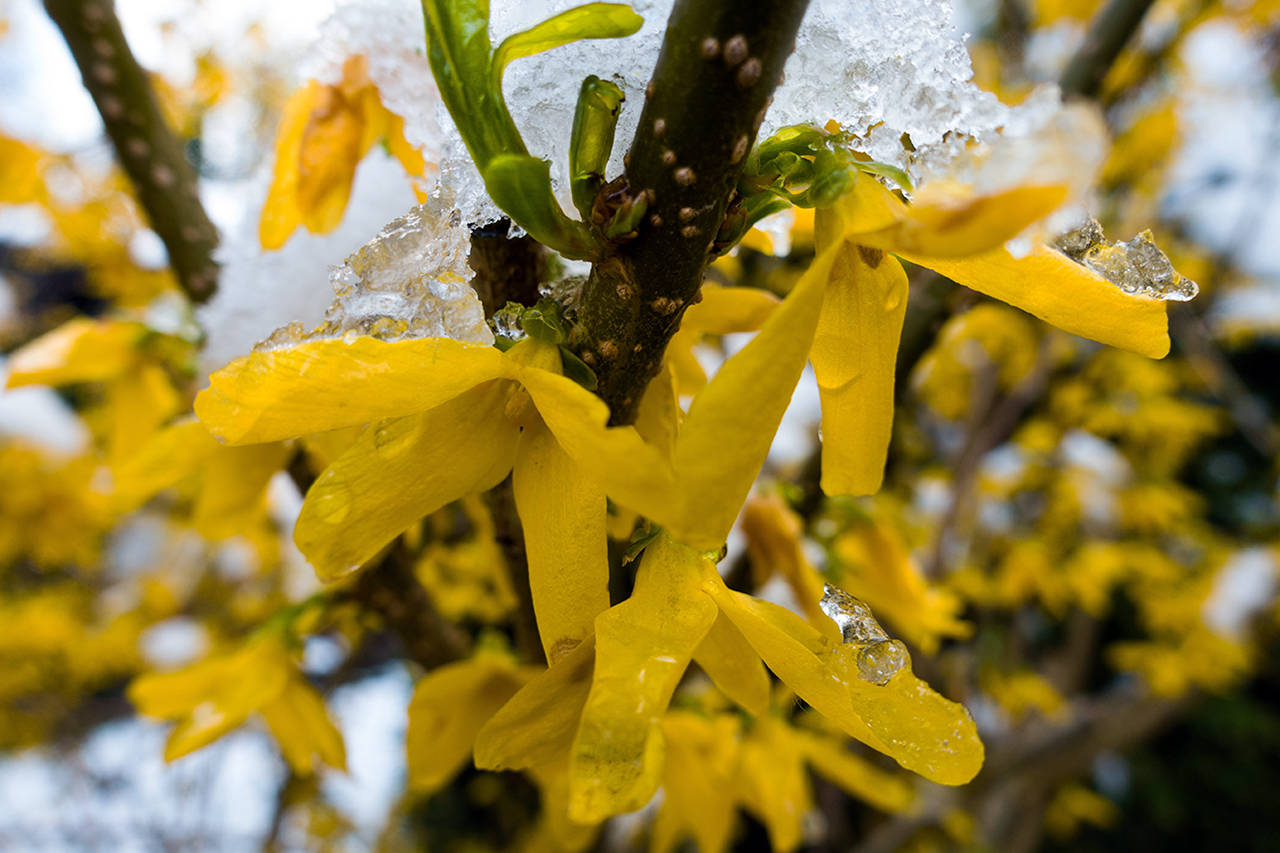By Dolores Cavanah
WSU Master Gardener
In previous articles, I described my favorite plants starting with the letters “A” through “D” that I grow here at Schafer Meadows. This week, I discuss my “E” and “F” favorites.
“E” is for Eucomis
(pineapple lily)
Native to southern Africa, this bulbous plant is named for its resemblance to a pineapple. On top of each flower is a green crest or crown of leaves. The impressive and exotic flowers look Seussian, very unusual and rather tropical. ·
Eucomis grows in Hardiness Zones 4-9 and likes full sun or partial shade.
The plants vary in size from 10 inches to almost 5 feet. The blooming plants come from a basal rosette of leaves that can be long and green or burgundy and strappy, wavy and short, or long and wavy. Some are mottled or freckled with white or burgundy coloration, some almost black.
The bloom period is from late summer to mid-autumn. The flowers may be white, pink, lavender, peach or light yellow.
The common variety that is readily available is moderate in size, has green leaves and white flower torches that are about 8 inches tall.
Planting the bulbs is more like instant gratification. Planting by seed takes a couple of years, whereas bulb planting will result in blooms the first year. In my garden, the slugs devoured the plants grown from seed in the ground before they had a chance to grow.
I prefer to plant the bulbs in containers. They make interesting potted plants on my deck.
“F” is for Forsythia
“What is so special about the deciduous shrub forsythia?” you ask. It’s all about the bloom time. It is surely the harbinger of spring in my garden.
From late winter to early spring, the arching bare branches are covered in yellow flowers 1 to 1.5 inches wide. Forsythia can brighten up any garden and attracts birds, bees and butterflies.
What makes it even more special is that after all the holiday decorations are put away, I go out in the garden and select a few of the bare branches, bring them inside, put them in a vase in water to force the blooms and watch for the buds to swell. Voila! A few days later the buds begin to open, and I have beautiful boughs of yellow blooms. What can be more cheerful than that on a cold winter’s day?
The blooms in the house are open and done in about three or four weeks. Then I go out and pick some more bare branches and do it again. By the time the second round is finished, there are other shrubs starting to flower (such as early rhododendrons), and spring has surely arrived!
If pruning is required, springtime after bloom is the time to to do it, taking out from the base one-third of the branches that have flowered. Once established, forsythia does not need much water and likes a sunny spot. It will, however, grow and bloom in shade or partial shade and tolerates most soils.
It’s not difficult to propagate forsythia by using the stem-cutting method, ideally in midsummer. Choose a stem or branch no thicker than a pencil that will bend and be flexible. It should be about 6 inches long after you snip off the soft and floppy tip. Strip off all but the two sets of leaves closest to the top. Stick the stem into rooting compound and then into the ground near the mother plant — or pot several stems in moist potting soil, about six stems to a one-gallon pot. Tent them with a plastic bag and keep them moist. Chances are you won’t get 100 percent of them to take root, so take lots of cuttings.
This article is part three of an occasional series in which Master Gardener Dolores Cavanah describes the plants she most admires at her expansive garden at Schafer Meadows, east of Montesano. To learn more about the WSU Master Gardener Program in Grays Harbor and Pacific Counties, visit PNWMG.org.


